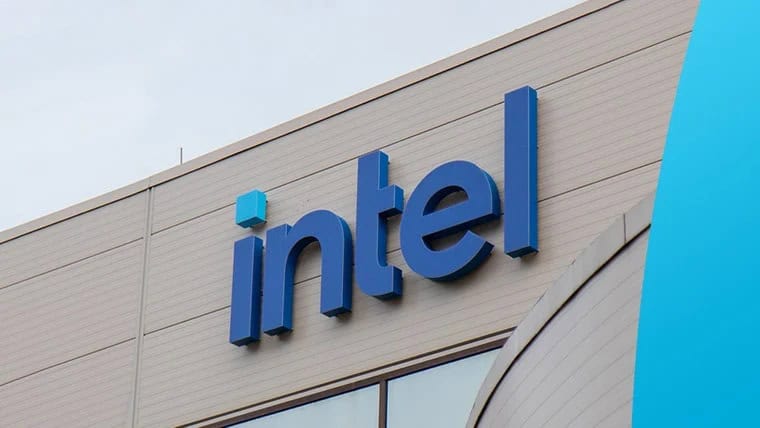
Last month I commented on this article about the current crisis of Intelwhich is definitely facing one of the most difficult moments in its long history as a semiconductor giant. Now, it’s time to talk about what the company is preparing as a response to this succession of misfortunes.
The company is outlining a crucial action and restructuring plan for the continuity of its business, which is also essential for the aspirations of the US government, its home country. Intel plays a central role in the dispute between the US and China for the future of the chip market, a context that has become even more urgent with the rapid advancement of AI.
An unfortunate, but necessary due to the bad timing, part of this restructuring plan was the dismissal of 15% of Intel’s workforce — a cut of more than 15 thousand employees, announced at the beginning of last month. The measure aims to reduce costs of US$ 10 billion.
Emergency actions also include postponing investments in factories in Italy and France.
Intel is currently facing a $1.6 billion loss in Q2 2024, a 1% year-over-year revenue decline, and public image issues due to instability and permanent damage to its some 13th and 14th generation processors. Historically known for manufacturing its own chips, Intel has always avoided outsourcing entirely, unlike competitors such as NVIDIA. In order to continue with its philosophy of maintaining the manufacture of its chips, Intel confirmed a decision that could change a lot in the coming years.

“Separating the wheat from the chaff”

A new phase of Intel’s plan involves spinning off its chipmaking division into a separate company. According to an official statement, Intel intends to establish the Intel Foundry as an independent subsidiary within the company.
According to the company, this restructuring will bring important benefits. “It will provide our customers and external suppliers with clearer separation and independence from the rest of Intel. Importantly, it also provides future flexibility to evaluate independent sources of financing and optimize the capital structure of each business to maximize growth and shareholder value creation.”
The official statementsigned by CEO Pat Gelsinger, makes a direct reference to two crucial points for Intel: the partners that use its factories to produce chips and the shareholders. The disclosure of this plan resulted in an 8% increase in the company’s shares last Monday (16).

With this split, Intel also projects a scenario in which outside sources of funding could be attracted to maintain Intel Foundry. This would clearly separate chip design from manufacturing, two segments that its historical rival, AMD, has already treated as distinct.
By considering external investment, Intel could accelerate the development of advanced technologies in lithography and chip manufacturing, competing more effectively with TSMC, the world’s leading semiconductor manufacturer.
AMD made a similar move
Anyone who follows the hardware market knows that the move Intel is making is not unprecedented. AMD was once responsible for both the design and manufacturing of its own chips. However, in October 2008, the company announced that chip manufacturing would become a separate business.
Quickly, a group from Abu Dhabi, which had already invested in AMD in 2007, entered as an investor in this new model, allocating US$ 700 million for 55% of the FoundryCo, which would later become the GlobalFoundries. Another US$300 million was invested to increase the group’s stake in AMD, jumping 8% to 19.3%.
In March 2009, the deal was completed. AMD acquired a 34% stake in GlobalFoundries and became the new independent company’s first customer. However, after facing several challenges in chip manufacturing, particularly at the time of the 32nm lithography, AMD ended its partnership with GlobalFoundries in 2012. At this time, AMD was transitioning to 28nm-based processors.

This separation allowed AMD to focus on chip design, which has driven its recovery in recent years, relying on TSMC’s manufacturing, which it already owned before the creation of GlobalFoundries, taking care of a large part of the production of GPUs for ATI, a company acquired by AMD in 2006.
The union with Amazon
Intel’s CEO also revealed other important details:
- The US government has injected US$3 billion to expand semiconductor production, seeking to protect the American supply chain;
- A strategic partnership was signed with Amazon Web Services (AWS)which includes investments in the production of specialized AI chips at Intel Foundry facilities.
From a technology perspective, Amazon’s investment is noteworthy. It’s no secret that big tech companies like Amazon and OpenAI are looking to reduce their reliance on NVIDIA. This move could be crucial for Intel to make up for lost time in the race to find major partners like AWS willing to develop their own AI hardware solutions.
The agreement involves jointly developing an AI chip using Intel’s 18A manufacturing process, as well as creating a special version of the processor. Xeon 6 for specialized AWS servers.

So far, there’s no indication that Intel will completely abandon its own chip manufacturing. The company remains committed to this aspect of its future, but it’s worth remembering what happened to AMD, which chose to outsource its manufacturing—a decision that proved crucial to its recovery.
And you, what do you think will happen to Intel? Is the company making the right decisions to move away from the crisis and regain its prominent position in the semiconductor market? Comment below with your opinion.
Source: https://www.hardware.com.br/artigos/o-plano-da-intel-para-tentar-contornar-crise/


